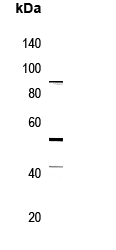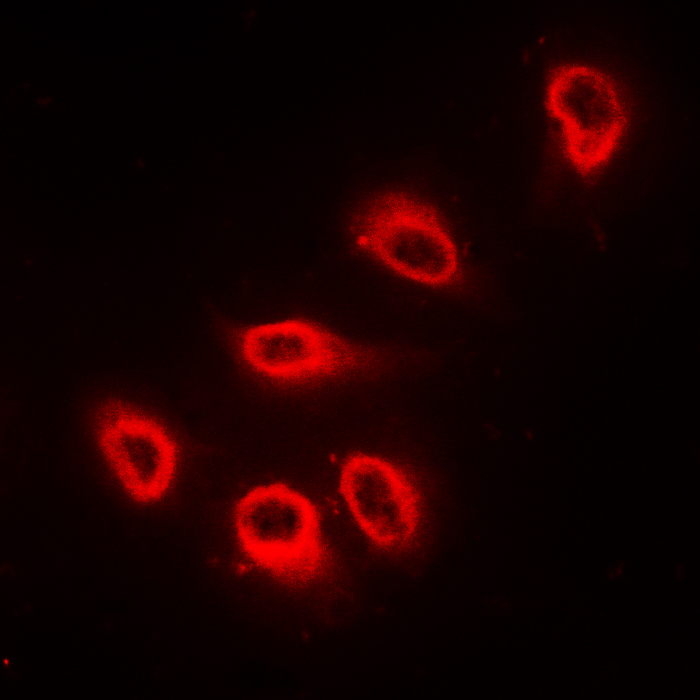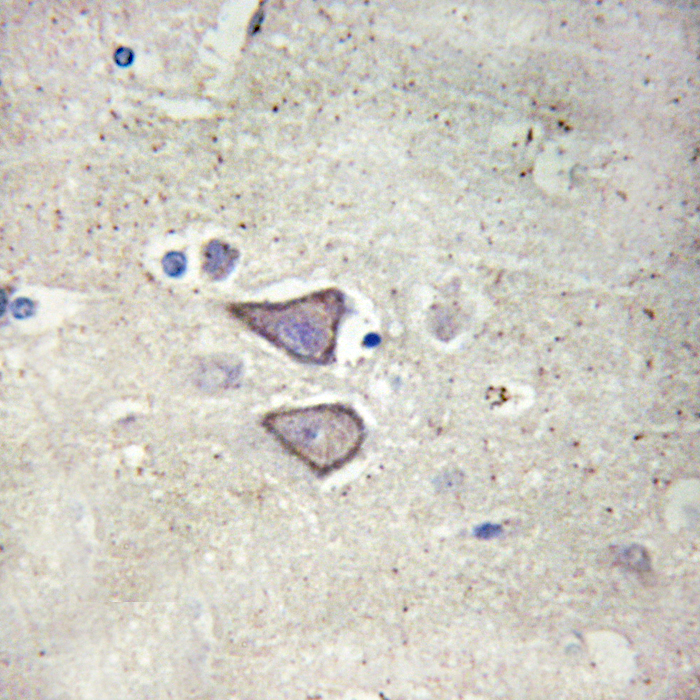


| WB | 咨询技术 | Human,Mouse,Rat |
| IF | 咨询技术 | Human,Mouse,Rat |
| IHC | 1/50-1/100 | Human,Mouse,Rat |
| ICC | 1/100-1/300 | Human,Mouse,Rat |
| FCM | 咨询技术 | Human,Mouse,Rat |
| Elisa | 咨询技术 | Human,Mouse,Rat |
| Aliases | Cadherin-9 |
| Entrez GeneID | 1007; |
| WB Predicted band size | 89kDa |
| Host/Isotype | Rabbit IgG |
| Antibody Type | Primary antibody |
| Storage | Store at 4°C short term. Aliquot and store at -20°C long term. Avoid freeze/thaw cycles. |
| Species Reactivity | Human,Rat |
| Immunogen | KLH-conjugated synthetic peptide encompassing a sequence within the center region of human CDH9. |
| Formulation | Purified antibody in PBS with 0.05% sodium azide. |
+ +
以下是关于Cadherin 9(CDH9)抗体的参考文献示例(注:部分信息为示例性概括,实际文献可能需要进一步检索验证):
---
1. **文献名称**: "Cadherin-9 regulates synapse-specific differentiation in the developing hippocampus"
**作者**: Williams ME et al.
**摘要**: 本研究利用特异性抗CDH9抗体,通过免疫组织化学和Western blot技术,揭示了Cadherin-9在小鼠海马神经元突触特异性形成中的作用。抗体验证显示CDH9在特定神经回路中高表达,并参与突触黏附调控。
2. **文献名称**: "CDH9 as a potential biomarker in colorectal cancer: antibody-based detection and clinical significance"
**作者**: Saito K et al.
**摘要**: 通过开发高亲和力抗CDH9单克隆抗体,研究团队在结直肠癌组织中发现CDH9表达水平与肿瘤转移呈负相关。抗体应用于免疫组化分析,提示CDH9可能作为抑制上皮-间质转化的标记物。
3. **文献名称**: "Generation and characterization of a monoclonal antibody against human Cadherin-9 for functional studies"
**作者**: Zhang L et al.
**摘要**: 文章报道了一种新型抗人CDH9单克隆抗体的制备与验证。该抗体在流式细胞术和免疫荧光中表现出高特异性,成功用于检测CDH9在胚胎发育中的时空表达模式,并证明其介导细胞黏附的功能。
4. **文献名称**: "Cadherin-9 modulates cell-cell adhesion and migration in glioblastoma"
**作者**: Lee JH et al.
**摘要**: 使用抗CDH9阻断性抗体,研究者发现抑制CDH9可增强胶质母细胞瘤细胞的迁移能力,提示其在肿瘤侵袭中的双重作用。抗体功能实验结合基因敲除技术,揭示了CDH9与Wnt信号通路的相互作用。
---
建议通过PubMed或Google Scholar以“CDH9 antibody”或“Cadherin-9 antibody application”为关键词检索最新文献,以获取具体研究细节。
Cadherin-9 (CDH9) is a calcium-dependent cell adhesion molecule belonging to the cadherin superfamily, which plays critical roles in tissue morphogenesis, synaptic specificity, and neural circuit formation. Predominantly expressed in the central nervous system, CDH9 is implicated in mediating homophilic cell-cell interactions, particularly during brain development. Studies highlight its involvement in axon guidance, neuronal connectivity, and synaptic plasticity, with specific expression patterns observed in regions like the hippocampus and cerebral cortex. Dysregulation of CDH9 has been linked to neurodevelopmental disorders, including autism spectrum disorders (ASD), where genetic variants or altered expression may disrupt neural network assembly.
CDH9 antibodies are essential tools for investigating its expression, localization, and function in both physiological and pathological contexts. These antibodies enable detection of CDH9 in immunoassays (e.g., Western blot, immunohistochemistry) and facilitate studies exploring its role in neural development or disease mechanisms. Recent research also suggests CDH9's potential involvement in cancer progression, particularly in malignancies with neural or epithelial origins, spurring interest in its therapeutic or diagnostic applications. Validation of CDH9 antibodies for specificity and cross-reactivity remains crucial, given the structural homology among cadherin family members. Overall, CDH9 antibodies serve as pivotal reagents for deciphering the molecular basis of neural connectivity disorders and exploring translational opportunities in biomedicine.
×